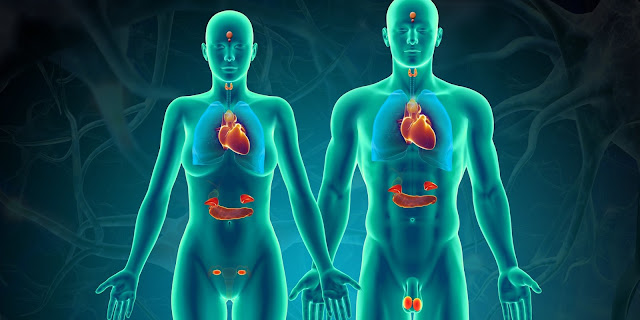Global Convergence in Healthcare: An Overview
The world is changing rapidly with globalization and technological advancements influencing several aspects of our lives. The healthcare sector is no exception to this trend of global convergence. While differences exist across countries in terms of healthcare infrastructure, policies, and priorities, there are clear signs of homogenization happening globally in this critical sector. Let us look at some of the key drivers and aspects of the global convergence happening in healthcare.
Rise of Chronic Diseases
One of the major factors fostering Global
Convergence is the rising prevalence of chronic and lifestyle diseases
across the world. Diseases like diabetes, cardiovascular diseases, and cancer
used to be more prominent in developed nations but are now becoming common
afflictions even in low and middle-income countries due to changes in diet, physical
activity levels and other lifestyle factors. According to the World Health
Organization, chronic diseases account for over 70% of all deaths globally.
This has shifted the focus of healthcare systems away from communicable
diseases towards more long-term management of chronic conditions.
Standardization of Treatment Protocols
Given the common challenges posed by chronic diseases, there is increasing
standardization happening in the management and treatment protocols used
worldwide. For instance, guidelines for diagnosis and treatment of conditions
like diabetes, cancers and mental health issues have become quite homogeneous
across many countries. Common protocols help healthcare practitioners share
knowledge and best practices more easily. They also enable patients to receive
consistent care regardless of location. Pharmaceutical companies develop many
drugs intended for global markets following standardized clinical trials and
approval processes.
Ageing Population: A Global Phenomenon
Advanced medical treatments combined with increased life expectancy have led to
ballooning elderly populations across the world. All regions will see a
substantial rise in the number and percentage of older persons in the next few
decades. An aging population structure is a shared reality and priority for
healthcare systems globally. It necessitates a focus on geriatric healthcare,
long-term and palliative care facilities on a wider scale. Issues like
cognitive decline, mobility and multi-morbidity will require innovative
solutions that can work internationally.
Mobile Health and Telemedicine
New digital technologies are enabling the delivery of healthcare in novel ways
without physical proximity between patients and providers. Mobile health apps,
wearable devices, tele-consultations and remote monitoring are increasingly
common worldwide. The potential of technologies like AI, big data and 3D
printing to transform diagnosis and treatment is also being explored globally.
These digital innovations help address issues of access in underserved areas
and cope with staffing shortages. They also facilitate worldwide collaborations
among experts separated by geography.
International Trade in Medical Services
While national healthcare systems may differ, international trade agreements
are promoting greater exchange of medical services, technologies and healthcare
professionals across borders. Many nations are actively working to attract
foreign patients through globally benchmarked facilities in areas like
transplants, oncology and geriatrics. Medical tourism is a growing phenomenon.
International accreditation bodies are harmonizing standards to facilitate
cross-border exchange. This competition and cultural transmission across open
international borders will work to disseminate best practices worldwide over
time.
Convergence in Medical Education and Research
Education and research are other key areas witnessing global convergence.
Medical curricula across the world now place more emphasis on competency-based
learning outcomes, evidence-based practice and population health approaches.
International student exchange programs are popular. Global research
collaborations on diseases and therapeutics are producing unified protocols,
while publication databases like PubMed provide universal sources of knowledge.
Multinational philanthropic organizations fund research projects targeting
global health issues. International conferences help advance uniform concepts,
models and benchmarks in healthcare innovation worldwide.
Challenges Remain Despite Convergence
While convergence trend is apparent, there are still many underlying
complexities and challenges in harmonizing healthcare practices globally. Vast
disparities persist in terms of spending, infrastructure and access across
countries. Pandemics like COVID-19 have highlighted gaps in cross-border
coordination and knowledge-sharing. Economic and political realities also
influence the pace of convergence. Significant cultural differences exist in
perceptions of health, illness and care preferences across societies. Ensuring
equity and ethics remain priorities as globalization impacts local healthcare
environments and vice-versa. Sustainable development also necessitates
context-specific solutions considering each region's priorities and resources.
Overall, global convergence is a multidimensional process that will evolve
through mutual learning and adaptation over the long run.
In conclusion, while differences will always exist, the forces of globalization
are leading to clear signs of convergence across various aspects of healthcare
worldwide. Common challenges coupled with newer technologies are fostering more
standardized protocols, borderless innovation and cultural exchanges that are
slowly but surely integrating once disparate systems internationally. With
greater cooperation and local adaptation, this trend could help address many
long-standing global health issues through shared progress, knowledge and best
solutions in the future.




Comments
Post a Comment